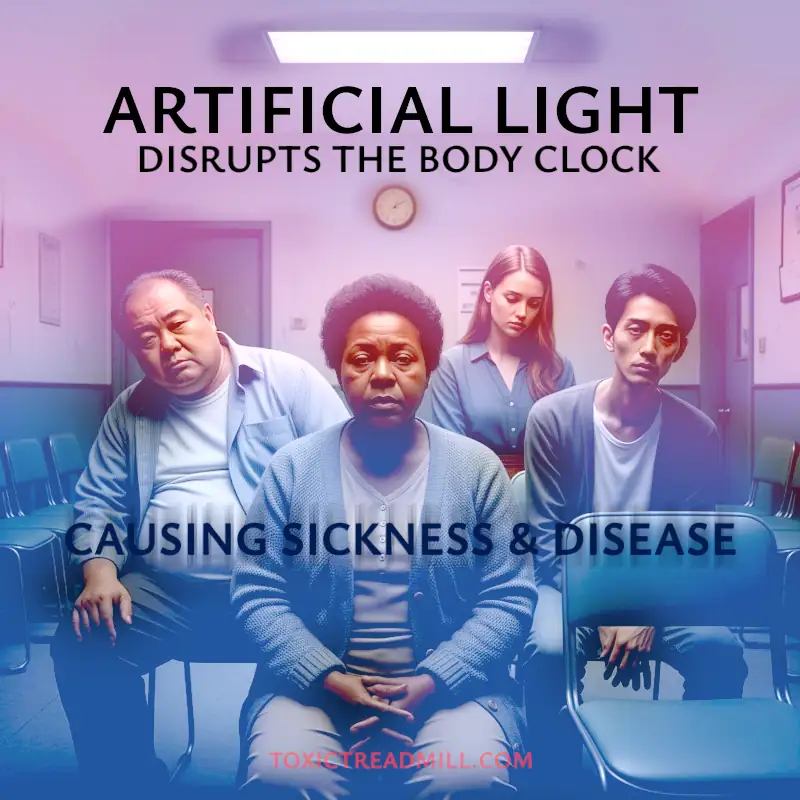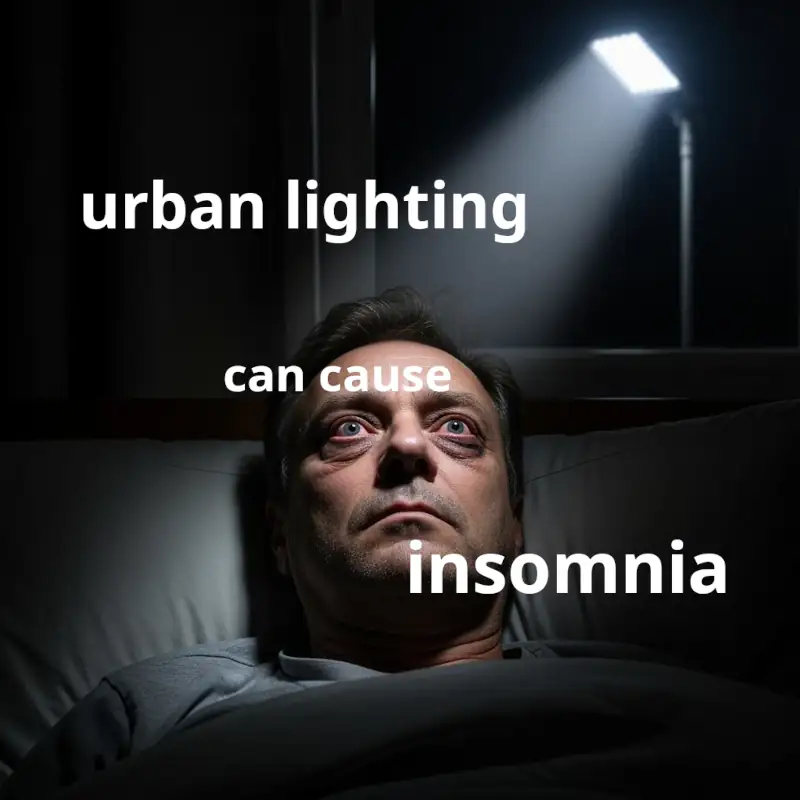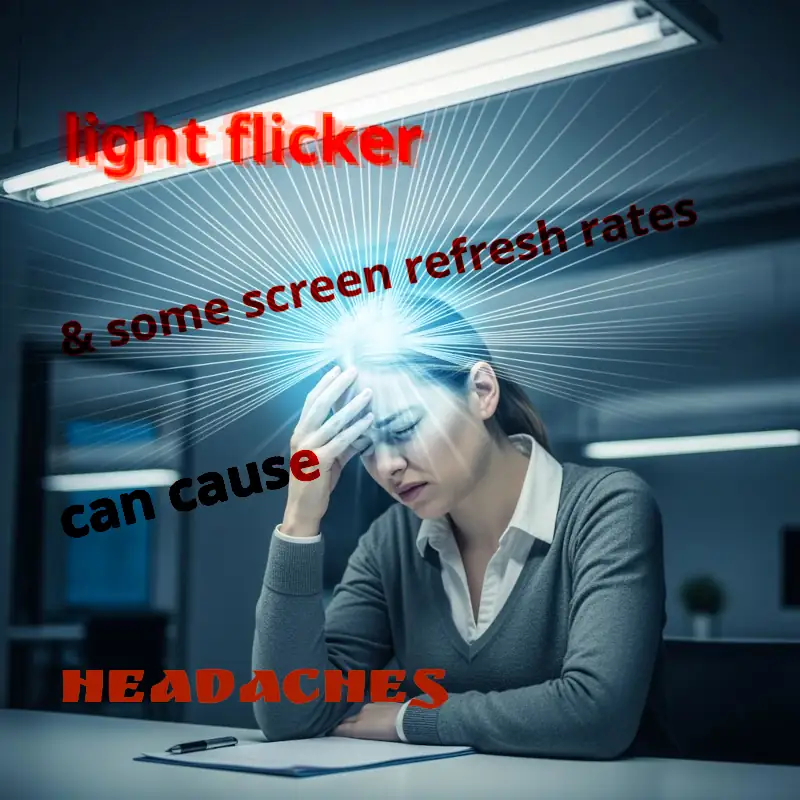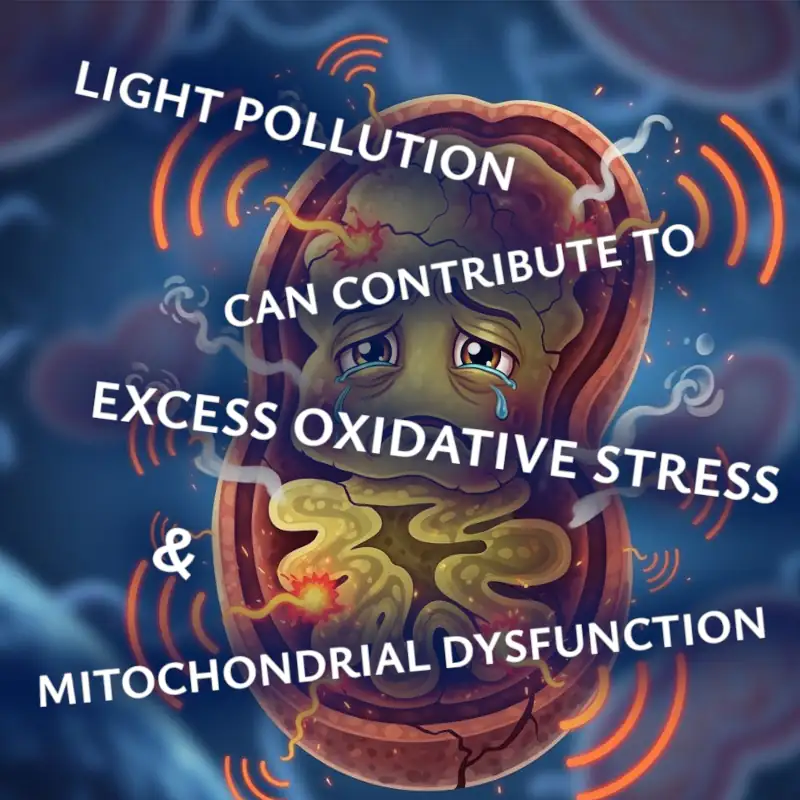Toxic Treadmill
Evidence for a Poisoned Planet
Toxic Light Pollution
Across the globe, the proliferation of artificial light, particularly at night, is a pervasive environmental concern. Light pollution contributes to a range of adverse physiological effects in humans, primarily by disrupting the natural circadian system. Extensive epidemiological studies, controlled laboratory experiments, and clinical trials provide a body evidence that links abnormal exposure to light at night (ALAN) to a spectrum of chronic diseases and disturbances including cancer, metabolic dysfunctions, mood disorders, sleep disturbances, and heart disease.
The circadian rhythm is a 24‐hour cycle (approximately) that regulates sleep–wake patterns, hormone secretion, and metabolic processes. It is entrained by light–dark cycles and primarily synchronized by the suprachiasmatic nucleus (SCN) in the hypothalamus. Light input to the SCN is mediated by intrinsically photosensitive retinal ganglion cells (ipRGCs) that express melanopsin, a photopigment most sensitive to short-wavelength, blue-rich light around 460–480 nm. When individuals are exposed to artificial light during the night, particularly light with a lot of blue in its spectrum, the activation of ipRGCs triggers the pineal gland to suppress melatonin production. This hormone normally signals nighttime and orchestrates metabolic, immune, and sleep-regulatory processes. Its suppression harms natural rhythms.

Melatonin suppression is a critical marker of circadian disruption and is widely accepted as one of the primary mechanisms linking ALAN to adverse health outcomes. Melatonin not only regulates sleep–wake cycles but also exhibits antioxidant, oncostatic, and anti-inflammatory properties. Its reduction has been associated with increased risks for several types of cancer, most notably breast cancer. Disrupted melatonin rhythms are also linked to metabolic disorders, including obesity and type 2 diabetes, as well as mental health disturbances such as depression and bipolar disorder.
Light pollution may also cause direct cellular damage via impacts on mitochondria and cytochrome systems. Laboratory studies have shown that blue light not only affects ipRGCs by reducing melanopsin expression, but also induces mitochondrial damage, increased oxidative stress, and alters cytochrome function within retinal cells. Cellular stress contributes to degenerative processes that underlie a range of pathologies, including neurodegeneration and systemic inflammatory states. The exact molecular cascades linking light-induced mitochondrial dysfunction to clinical disease are still being explored. However, current evidence suggests that chronic exposure to artificial light, particularly in the blue spectrum, may elicit damage at the very core of cellular energy production and apoptosis regulation.
Light-induced circadian misalignment also drives alterations in clock gene expression. Genes such as PER (period), CRY (cryptochrome), CLOCK, and BMAL1 form molecular loops that regulate circadian timing and modulate a host of downstream physiological processes. Disruption of these clock genes through nighttime light exposure can lead to phase shifts, and dampened amplitude in circadian rhythms. This further exacerbates sleep disturbances and metabolic dysregulation. Subjects exposed to short-wavelength light in the evening demonstrate altered expression of these clock genes, which has been linked to functional impairments in glucose metabolism and other endocrine functions.
There is comprehensive epidemiological evidence linking both incidence and outcomes of several chronic diseases with the intensity and duration of nighttime light exposure. A major concern is the association between ALAN and cancer risk. Numerous studies have found that both outdoor ALAN, derived from urban sky glow and poorly directed lighting, and indoor exposure from screens or ambient domestic lighting, are associated with increased breast cancer incidence. Night-shift workers and those living in high-light environments being most at risk. Experimental animal models further support these findings. Rodents tortured with conditions of constant light show accelerated tumor growth, increased tumor incidences, and alterations in hormone-dependent signalling pathways.
Disrupted circadian rhythms can lead to misalignment between central and peripheral clocks, resulting in impaired regulation of insulin, altered energy metabolism, and an increased propensity for weight gain. Clinical studies have documented that individuals with irregular or misaligned sleep patterns exhibit higher rates of obesity and type 2 diabetes. These associations are underpinned by the fact that melatonin plays a protective role in modulating insulin secretion and lipid metabolism; thus, its suppression may predispose to metabolic syndrome.

Chronic circadian misalignment and sleep disruption are potent risk factors for mood disorders, including major depression and bipolar disorder. Experimental interventions that reduce blue light exposure in the evening, such as the use of blue-depleted light sources, have been shown to ameliorate sleep disturbances and improve mood; further evidence for the role of circadian disruption in mental health deterioration. Mechanisms likely involve alterations in neurotransmitter signalling and neuroinflammatory pathways, which are modulated by the rhythmic secretion of melatonin and other circadian hormones.
Ongoing proliferation of artificial light correlates with worsening incidence and outcomes of many associated health disturbances. Exponential increases in the use of light-emitting diodes (LEDs), compact fluorescent lamps (CFLs), and electronic displays, have dramatically altered the spectral composition of ambient light. LEDs, in particular, emit a high proportion of blue light, which has been identified as the most potent wavelength for melatonin suppression and circadian disruption. Clinical trials have demonstrated that exposure to blue-enriched light in the evening leads to significant reductions in melatonin levels and subsequent sleep disturbances, whereas blue-depleted light sources may mitigate these effects under controlled, low-lux conditions. Collectively, this evidence supports the hypothesis that light pollution is causally related to adverse health outcomes. It also indicates that the specific characteristics of light, such as spectral quality, intensity, timing, and duration, are critical determinants of the physiological harm incurred.
An additional dimension of light pollution arises from non-visible electromagnetic energy. Infrared and low-level radiofrequency (RF) emissions, which can also come from lighting, are also likely to have biological effects.

Refresh rates are the frequency at which digital screens update their image. Specific refresh rates and flicker characteristics have been demonstrated to induce headaches, ocular strain, and other neurological symptoms in sensitive individuals. The precise pathways for these effects remain less clear. Non-optical light sensing mechanisms operating at the cellular level may play a role.
From an evolutionary standpoint, the human circadian system developed over millennia under natural light–dark cycles. They provided a robust framework for synchronizing behaviour and physiology to environmental cues. The sudden and widespread introduction of artificial light has imposed an evolutionary mismatch, with modern light environments diverging sharply from those encoded by our genetic legacy. This is likely to contribute to the rising prevalence of circadian-related diseases in industrialized societies. Migration will add to this issue, with many genetic variations in clock genes (e.g. PER2, OPN4) being specifically adapted to the light cycles of particular latitudes.

Light pollution may also affect the modulation of mitochondrial function. Mitochondria, the powerhouses of the cell, are especially sensitive to oxidative stress. High-intensity, blue-rich light can induce mitochondrial dysfunction through increased production of reactive oxygen species (ROS). Excessive ROS generation can damage mitochondrial membranes and DNA, impairing cellular energy metabolism, fuelling the ageing process, and contributing to metabolic and degenerative diseases. The interactions of mitochondria and light are still under investigation, but preliminary evidence linking repeated or chronic exposure to ALAN with the exacerbation of contemporary illness is compelling.
Cytochrome enzymes may also be affected by abnormal light exposures. They play a critical role in cellular respiration and detoxification processes, and light-induced oxidative stress could impair cytochrome function, increasing vulnerability to environmental toxins. Direct clinical evidence is still limited, but preliminary evidence strongly suggests more research is needed.
Indirect effects of light pollution on human health occur due to its influence on flora, fauna, and entire ecosystems. Many species, particularly nocturnal organisms, rely on natural light cues for critical activities such as foraging, mating, and migration. Disruption of these behaviours can lead to population declines and altered ecosystem dynamics that impact resources humans rely on. For example, reduced populations of nocturnal pollinators, and changes in predator–prey relationships can affect agricultural productivity.
References
Boyce, P. R. (2022). Light, lighting and human health. Lighting Research & Technology, 54(2), 101-144.
Cajochen, C., Frey, S., Anders, D., Späti, J., Bues, M., Pross, A., ... & Stefani, O. (2011). Evening exposure to a light-emitting diodes (LED)-backlit computer screen affects circadian physiology and cognitive performance. Journal of applied physiology, 110(5), 1432-1438.
Cho, Y., Ryu, S. H., Lee, B. R., Kim, K. H., Lee, E., & Choi, J. (2015). Effects of artificial light at night on human health: A literature review of observational and experimental studies applied to exposure assessment. Chronobiology international, 32(9), 1294-1310.
Gaston, K. J., Gaston, S., Bennie, J., & Hopkins, J. (2015). Benefits and costs of artificial nighttime lighting of the environment. Environmental Reviews, 23(1), 14-23.
Green, A. S. (2017). The effects of screen illumination on: sleep efficiency and architecture, physiology, emotion and behavior-possible effect on human health. University of Haifa (Israel).
Grubisic, M., Haim, A., Bhusal, P., Dominoni, D. M., Gabriel, K. M., Jechow, A., ... & Hölker, F. (2019). Light pollution, circadian photoreception, and melatonin in vertebrates. Sustainability, 11(22), 6400.
Kumar, P., Ashawat, M. S., Pandit, V., & Sharma, D. K. (2019). Artificial Light Pollution at Night: A risk for normal circadian rhythm and physiological functions in humans. Current Environmental Engineering, 6(2), 111-125.
Lunn, R. M., Blask, D. E., Coogan, A. N., Figueiro, M. G., Gorman, M. R., Hall, J. E., ... & Boyd, W. A. (2017). Health consequences of electric lighting practices in the modern world: a report on the National Toxicology Program's workshop on shift work at night, artificial light at night, and circadian disruption. Science of the Total Environment, 607, 1073-1084.
Menculini, G., Cirimbilli, F., Raspa, V., Scopetta, F., Cinesi, G., Chieppa, A. G., ... & Tortorella, A. (2024). Insights into the Effect of Light Pollution on Mental Health: Focus on Affective Disorders—A Narrative Review. Brain Sciences, 14(8), 802.
Salceda, R. (2024). Light pollution and oxidative stress: Effects on retina and human health. Antioxidants, 13(3), 362.
Svechkina, A., Portnov, B. A., & Trop, T. (2020). The impact of artificial light at night on human and ecosystem health: a systematic literature review. Landscape Ecology, 35(8), 1725-1742.
Tähkämö, L., Partonen, T., & Pesonen, A. K. (2019). Systematic review of light exposure impact on human circadian rhythm. Chronobiology international, 36(2), 151-170.
Ticleanu, C. (2021). Impacts of home lighting on human health. Lighting Research & Technology, 53(5), 453-475.
Walker, W. H., Bumgarner, J. R., Walton, J. C., Liu, J. A., Meléndez-Fernández, O. H., Nelson, R. J., & DeVries, A. C. (2020). Light pollution and cancer. International Journal of Molecular Sciences, 21(24), 9360.